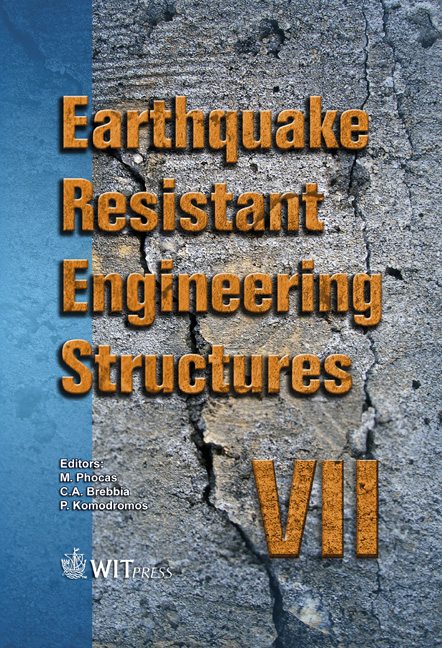Effect Of Elastic Columns On The Mechanism Of Damage Control For Steel Structures In Japan And The USA
Price
Free (open access)
Transaction
Volume
104
Pages
11
Page Range
53 - 63
Published
2009
Size
441 kb
Paper DOI
10.2495/ERES090051
Copyright
WIT Press
Author(s)
Y. Kimura & S. Hamazaki
Abstract
There are some differences in steel structures from the point of view of seismic designs between the USA and Japan. Japanese typical frames are spatial moment resisting frames. USA frames are the perimeter frames, and the columns inside the frames are designed as gravity columns, which support only the weight of the buildings. Such columns may divide the shear force over the height of the frame and work as damage control systems. This study clarifies the drift deformation concentration for the standard steel moment resistant frames in the USA and Japan. The equations for the drift concentration are developed under the equilibrium conditions, and compared with the push over analyses results. Keywords: USA and Japanese moment resisting frame, gravity column, drift concentration factor, ratio of column flexural stiffness. 1 Introduction The typical structural system of steel buildings in the USA is perimeter frame, while the Japanese typical steel system is a spatial moment resisting frame. USA frames consist of seismic columns and gravity columns. While the gravity columns are designed not to carry the seismic forces and the role of the gravity columns is to support the weight of the building, they have some flexural stiffness. Such column flexural stiffness and strength are regarded as the redundancy of structures, and the effect of column properties on the soft story mechanism is supposed to be performed during an earthquake. While researches have been concerned about the possibility of drift concentration in frames (e.g.
Keywords
USA and Japanese moment resisting frame, gravity column, drift concentration factor, ratio of column flexural stiffness.





